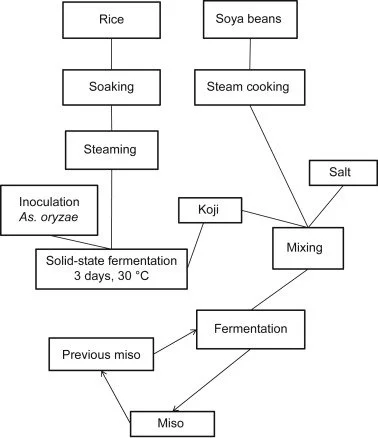Science of Miso
If you were wondering what the savory taste in the soup commonly served alongside your meal at Japanese restaurants, it is miso.
Fermentation Process
The preparation of miso involves soybeans, rice, salt, water, and Aspergillus oryzae mold cultures. Oryzae is mixed with the steamed rice mixture to form a fermented product called koji.
After koji is created, it is combined with cooked soybeans and salt. Koji enzymes break down the soybean proteins, starches, and fats into amino acids, sugars, and fatty acids.
Types of Miso
There are many different types of miso based on what grain is used and how long the fermentation period is. For example, Mugi miso is made from malted barley, Kome miso from malted rice, and Mame miso from malted soybeans. The longer the mixture ferments, the more intense and complex the flavors become.
References Cited:
Shutleff, W., Aoyagi, A. (2001). The Book of Miso: Savory Soy Seasoning. Emeryville, CA: Ten Speed Press.
Hesser, A. (1997, Sept 3). Miso Goes Beyond Japanese Cooking. The New York Times Magazine. Retrieved from http://www.nytimes.com
Bittman, M. (2012, March 8). Umami Dearest. The New York Times Magazine. Retrieved from http://www.nytimes.com
